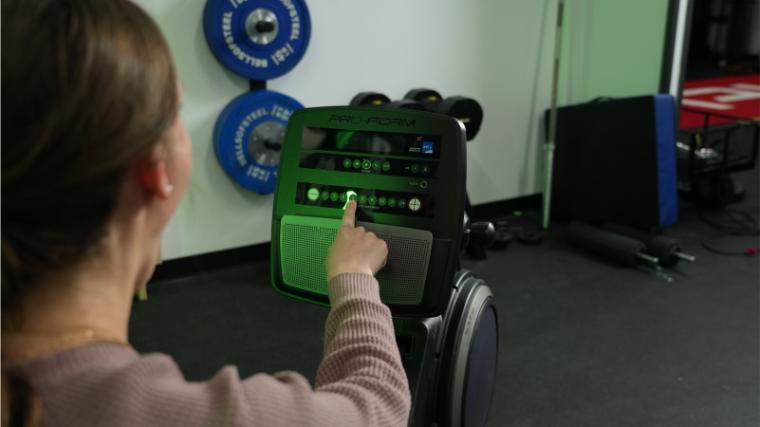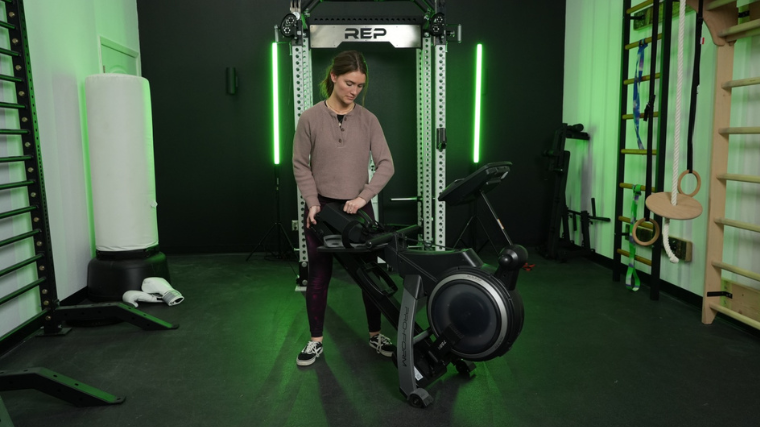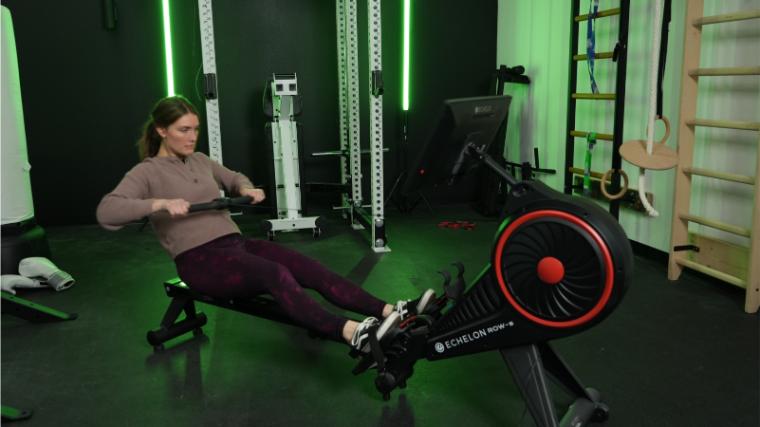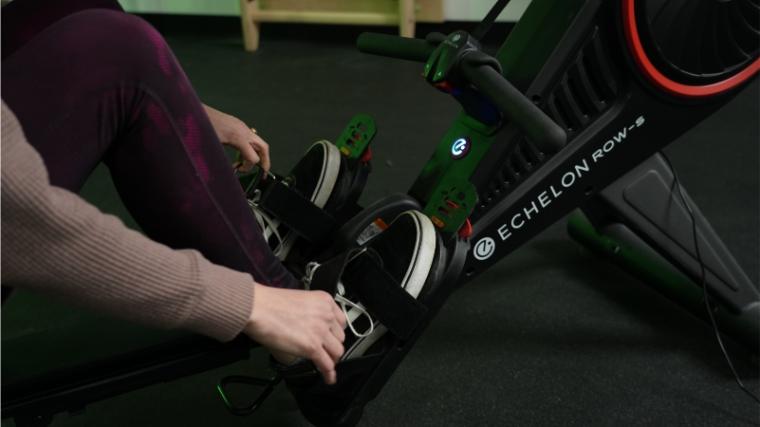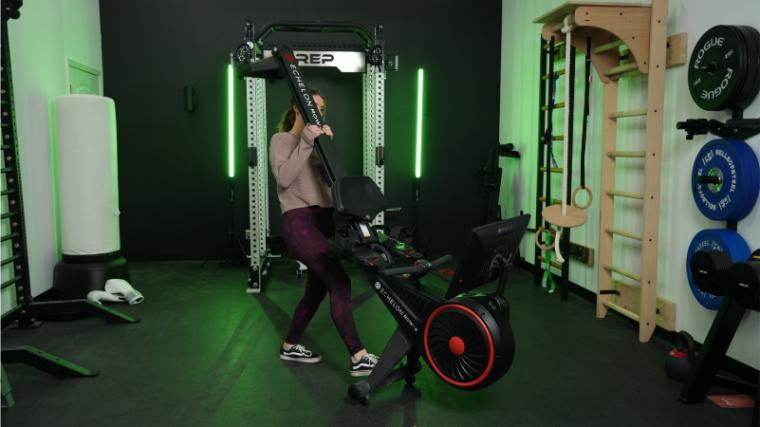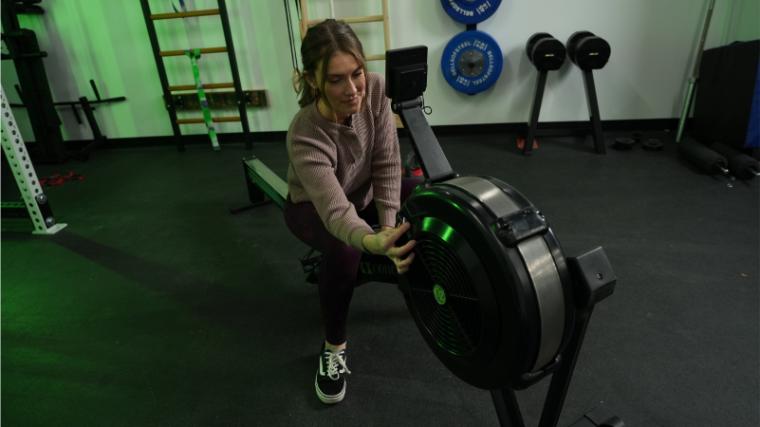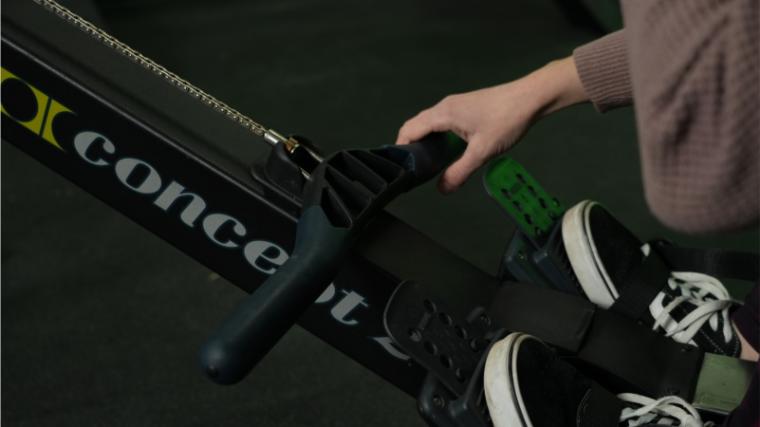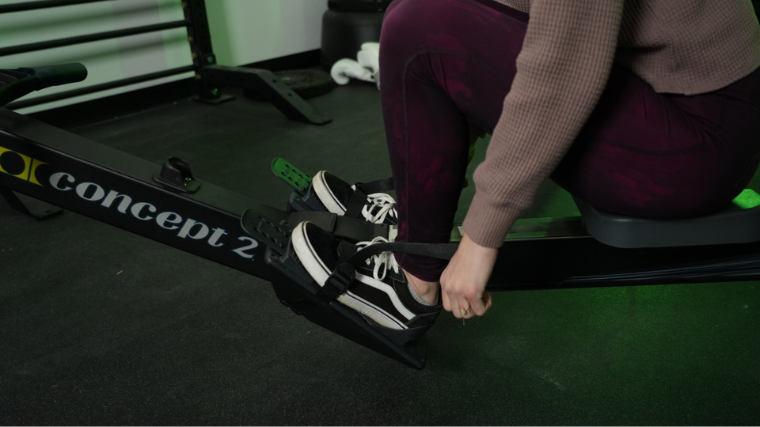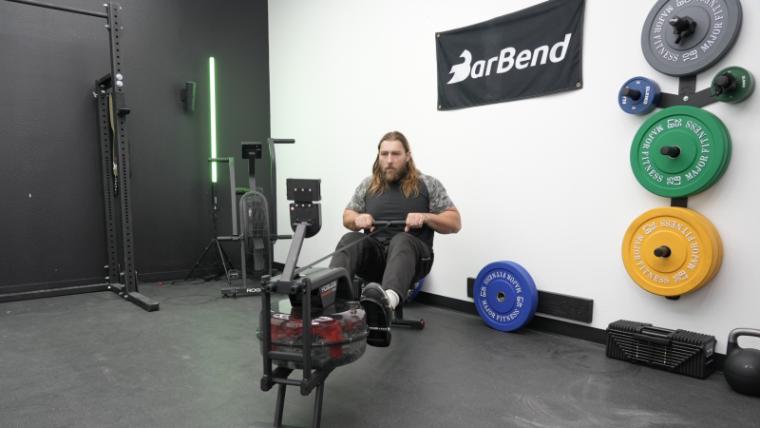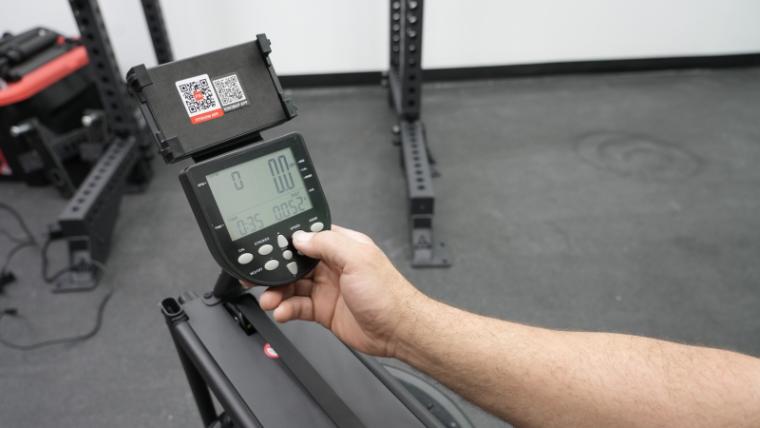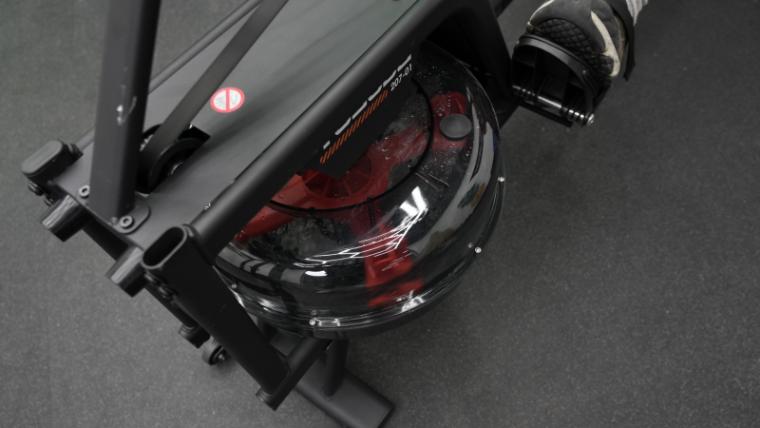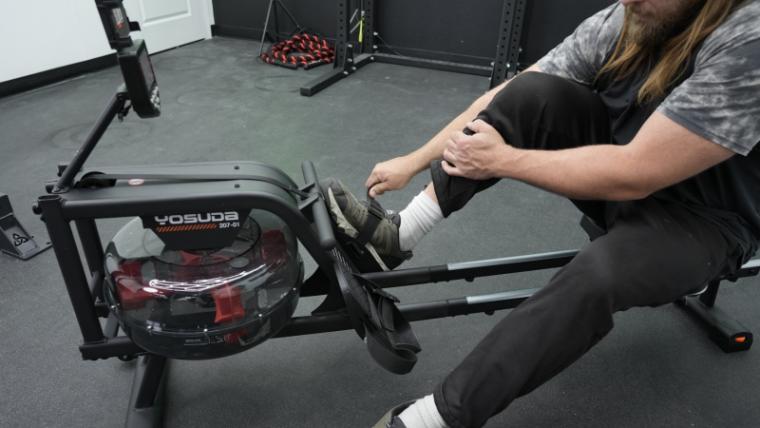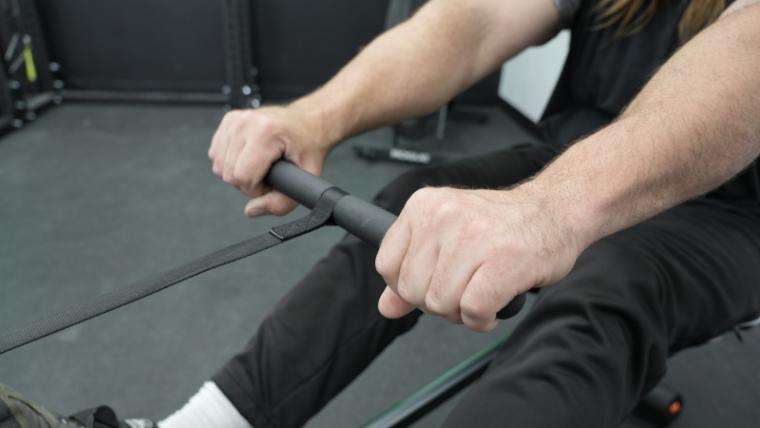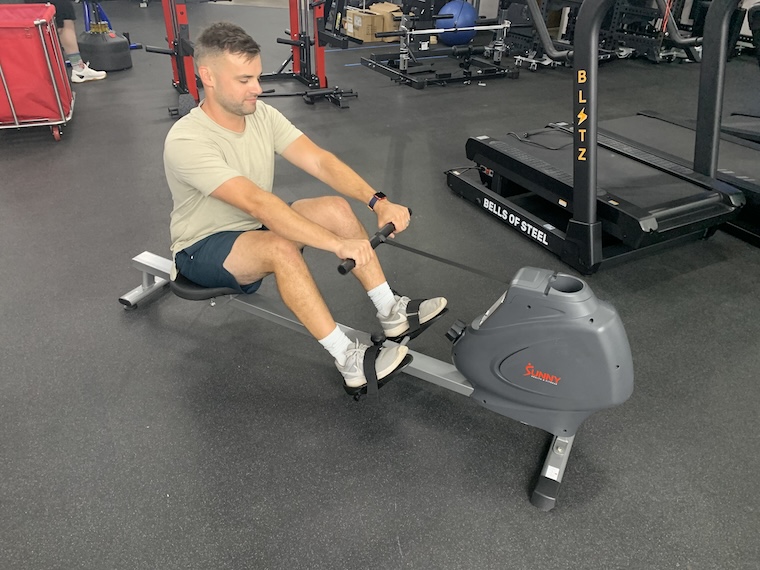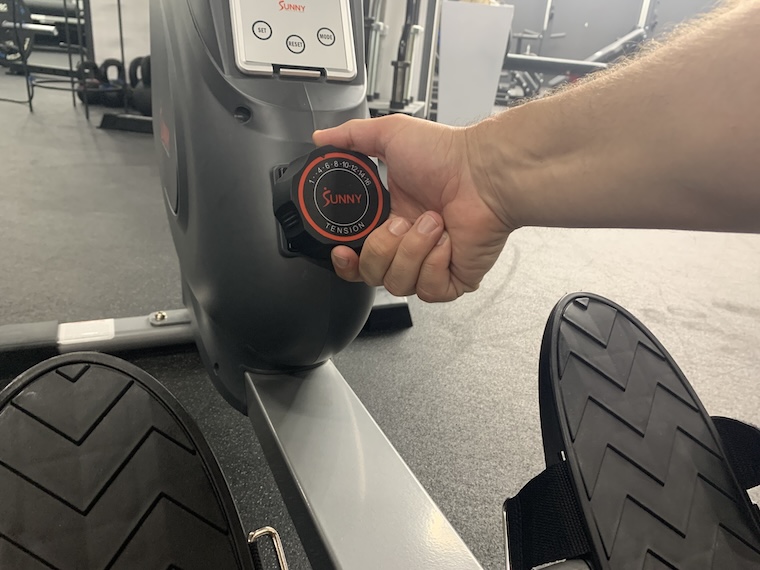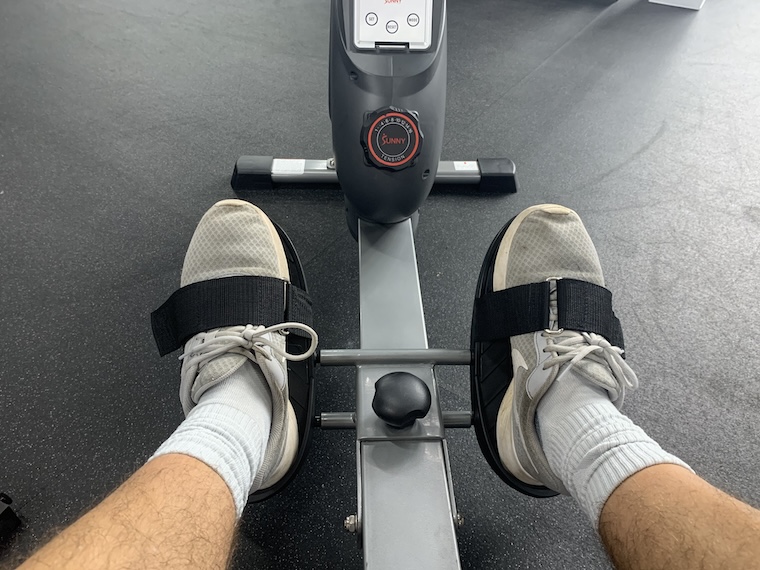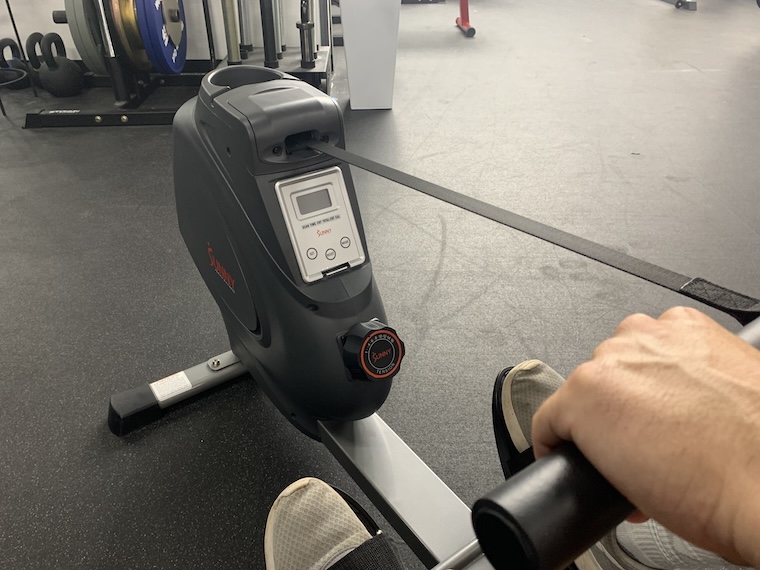The best rowing machines offer great low-impact cardio exercise for beginners to elite-level athletes. These “ergs” are softer on your joints than treadmills, and they can work all the muscles in your body. (1) Your legs push during the drive (the first part of the stroke), and your back and arms cover the last two parts of the stroke. Home rowing machines are a great tool to have in your gym, but they can be quite expensive — especially if you’re looking for the latest and greatest in technology. However, we did some serious digging and found the best budget rowing machines that don’t skimp on features.
Since many rowers can cost up to about $3,000, we chopped that number in half and kept all of these budget options under $1,000. But even within the lower price range, you still have a lot of information to sift through. Do you want a water rower, air resistance rower, or magnetic resistance rower? Do you want a machine that has high-tech features and streaming services, or do you want something less complicated that just allows you to row at home? No matter your needs, we used our expert-led fitness equipment testing methodology to test over a dozen rowers. One of these budget rowing machines is sure to suit your fitness goals.
The Best Budget Rowing Machines of 2025
- Best Budget Rowing Machine Overall: Sole SR500
- Best Budget Rowing Machine for Home: ProForm 750R
- Best Budget Rowing Machine for Beginners: Yosuda Air Magnetic Dragonfly Rower
- Best Budget Rowing Machine for Small Spaces: Bells of Steel Blitz Air Rower
- Best Budget Rowing Machine for Streaming: Echelon Row
- Best Budget Air Rowing Machine: Concept2 RowErg
- Best Budget Water Rowing Machine: Yosuda Water Rowing Machine
- Best Budget Rowing Machine Under $500: Sunny Health & Fitness Magnetic Rowing Machine
Best Budget Rowing Machine Overall: SoleSR500
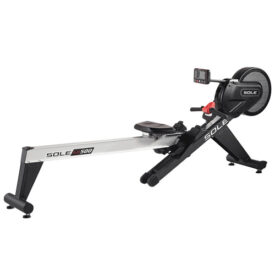
The Sole SR500 is an advanced magnetic air resistance rower with a 5.5” display that tracks all your necessary stats, like heart rate, calories, wattage, strokes per minute and split time. It has a raised seat, making it easy to get in and out of and a high weight capacity of 515 pounds, which is ideal for larger users.
Specs
- Resistance Type: Magnetic/Fan
- Display Type: 5.5 inch LCD
- Weight Capacity: 375 pounds
- Dimensions: 38” H x 97” L x 18” W
- Price: $749.99
The best magnetic rowing machines can be pricey, but that doesn’t mean you can’t get a high-quality machine on a budget. Our top pick is a rower that combines magnetic and air resistance to support rowing workouts for all fitness levels. Let us introduce you to the Sole SR500.
If you’ve always dreamed of rowing on an Athenian Trireme in the Mediterranean Sea, you might have to keep dreaming — but you can certainly get the feeling of rowing on real water from the SR500. The combination of air and magnetic resistance works to mimic the feeling of rowing on water for a unique challenge rarely afforded by budget rowers. The long aluminum rails are sturdy enough to accommodate users of varying heights. Plus, it can handle up to 375 pounds, so many users can climb aboard and row.
Getting on and off this indoor rowing machine is easy, thanks to the 20-inch sitting position. Also, the adjustable foot support accommodates different heel angles and foot sizes. The controls on the rowing handle are a nice touch — this allows you to cycle between 16 resistance levels without losing your rhythm mid-workout. The SR500 comes with 11 pre-set workouts, including two heart rate programs. You can also stream classes using the 90-day free trial of Studio™ for over 3,000 classes, so your workouts never become stale.
If you want to round out your home gym’s cardio equipment with a rowing machine, the SR500 is a great option that includes a ton of features for both practicality and convenience. It’s heavy-duty, fits athletes of different sizes, and manages to stay budget-friendly.
Read our full Sole SR500 Rower Review.
Best Budget Rowing Machine for Home: ProForm 750R
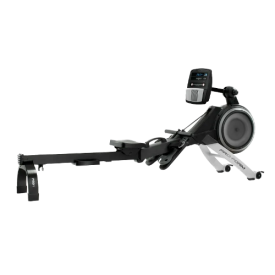
The ProForm 750R Rower is integrated with iFIT and offers twenty preloaded rowing workouts. Its foldable steel rail reduces length by nearly half and the twenty-four magnetic resistance levels provide quiet operation.
Specs
- Resistance Type: Magnetic
- Display Type: 5-inch color display
- Weight Capacity: 250 pounds
- Dimensions: 45.5” H x 86.5” L x 22” W
- Price: $699.00
If you need a rowing machine that doesn’t take up too much space but still provides a variety of features to keep you hooked on your workout routine in the comfort of your own home, this pick is your best bet.
The ProForm 750R provides most of the same features as more high-tech rowers, but its console doesn’t take up as much room, which can be great for those who are tight on space at home. This machine has 24 levels of silent magnetic resistance and a console that can track all of your stats (calories, split time, strokes, distance, and time) as you row.
The console also has a tablet holder to offer the same streaming options as you would find on high-tech, interactive rowers. This rower comes with a free month of iFit, and it even folds to save space when it’s not in use.
The ProForm 750R is ideal for those who want to save a little space in their home but still want the fitness class experience.
Read our full ProForm 750R Review.
Best Budget Rowing Machines for Beginners: Yosuda Ar Magnetic Dragonfly Rower
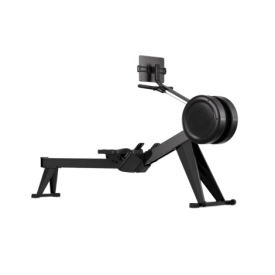
The YOSUDA Air Magnetic Dragonfly Rowing Machine is a gym-grade rowing machine under $1,000 with dual air and magnetic resistance, plus free personalized training plans to help you track your progress.
Specs
- Resistance Type: Air and magnetic
- Display Type: Use your own tablet or phone
- Weight Capacity: 330 pounds
- Dimensions: 50.5” H x 94” L x 23” W
- Price: $999.99
For beginners who may be overwhelmed at the thought of a fancy, teched-out rowing machine, we recommend the YOSUDA Air Magnetic Dragonfly rower. It’s a solid rower with hybrid resistance that will appeal to a wide variety of athletes.
We appreciate this low-maintenance, easy-to-use cardio machine for several reasons. First, it’s basically ready to use right out of the box; just plug it in and connect your phone or tablet via Bluetooth to get rowing. Dual air and magnetic resistance offers relatively quiet operation. There are eight levels of magnetic resistance, which is less than most magnetic rowers, but we like that you can control the resistance via the handlebar. That conclusion led us to give the Dragonfly a 4 out of 5 for customizations.
We’re also pleased with the light footprint of this rower. It weighs in at less than 100 pounds (yet has a 330-pound weight capacity). The rower has front transport wheels and a rear handle to move and store the machine after your workout. For these reasons, we give the Dragonfly a 4 out of 5 for footprint and portability.
We found both pros and cons to the Dragonfly’s ergonomics. On one hand, taller users may not feel fully comfortable on this rower. The slide rail is only 47.24″ (many other options on the market are at least 50″). On the other, we appreciated that the seat height is 19.3″, which is higher off the ground than many other models (and may be easier to lower onto for athletes with limited mobility).
You will have to provide your own tech for this rower, since it lacks even a basic LCD screen to show stroke rate, pace, and other key metrics. It is fairly easy to connect your phone or tablet via Bluetooth, and once you’re set up, you can take advantage of the Feier App to monitor your data and complete preset workouts (which automatically adjust your resistance throughout). We give the Dragonly a 3.5 out of 5 for tech.
Best Budget Rowing Machine for Small Spaces: Bells of Steel Blitz Air Rower
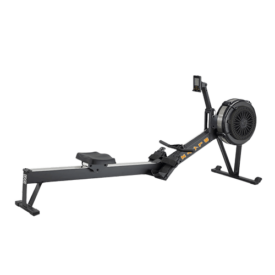
The Bells of Steel Air Blitz Rower is one of the more affordable options on the market right now. This one is light and easy to roll around your home gym as needed or store away when you're expecting guests.
Specs
- Resistance Type: Fan
- Display Type: Small LCD
- Weight Capacity: 320 pounds
- Dimensions: 37.5” H x 95” L x 24.25” W
- Price: $799.99
Figuring out how to organize your workout equipment can be a daunting task when dealing with small spaces. Thankfully, this rower can disassemble easily and roll in and out of spaces with no trouble. Our top pick for this category is a tried and true rower — the Bells of Steel Blitz Air Rower.
The Blitz Air Rower is just under 8 feet in length and about 2 feet in width, so it doesn’t take up much floor space at all. But if you need to save precious square footage, this machine stores easily — it only takes a few moments to disassemble when you’re expecting guests and want more space. Or, you can easily roll the rower around when needed.
Rowing for hundreds of meters is tough, especially if your machine doesn’t feel comfortable. Luckily, this machine’s seat is ergonomically designed, so you’ll feel perfectly comfortable. And the footrests are easy to adjust, keeping your feet stable and locked in place. Plus, you can rest easy knowing that you’re getting a piece of equipment that will last for years with Bells of Steel’s extended 5-year warranty.
The Bells of Steel Blitz Air Rower rower isn’t just a great rower for space-saving purposes, it’s just a reliable rower in general. If you’ve got minimal space to work with but still want a rower, this machine is trusted and offers multiple folding/storage options that can save you a ton of floor space.
Best Budget Rowing Machine for Streaming: Echelon Row
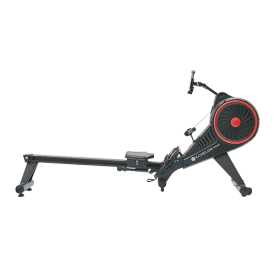
This Echelon rower is more compact than others and it's budget-friendly. You can choose from 16 levels of resistance and mount your tablet on the device holder.
Specs
- Resistance Type: Magnetic
- Display Type: Pivoting device holder
- Weight Capacity: 300 pounds
- Dimensions: 45” H x 84” L x 21” W
- Price: $999.00
Sometimes working out with the motivation of a trainer or competing against a group of other trainees can help kick up the intensity and make the experience more enjoyable. If you’re in the market for a rowing machine for streaming workouts, it’s hard to find a better option than the Echelon Row — one of the best foldable rowing machines that we’ve tested.
You won’t always see high-tech streaming options on budget rowers. While the Echelon Row doesn’t have a built-in touchscreen, which helps keep the price down, it does have a pivoting device holder so you can stream apps from your own device. “Because this device holder pivots, I was able to do off-rower workouts from my tablet as well,” says our tester, a CrossFit Level-1 trainer.
A Bluetooth resistance controller on the handlebar allows you to adjust the 32 levels of magnetic resistance, unlike other rowers which either don’t have adjustable resistance or require you to stretch forward to adjust the dampener. “You just tap a button on the middle of the handle and you can adjust your resistance mid-stroke,” says our tester, who gave customizations a 4 out of 5 score.
One consideration is the lower-than-average user weight capacity of 300 pounds, which larger athletes may find too low. We typically like to see a rower’s weight capacity be between 350 to 450 pounds. “It feels really sturdy and solid,” says our tester, “but there are a lot of plastic parts used in the, at least, esthetics build of this equipment.” Durability scores a 4 out of 5.
Our tester thought the plastic shrouds made this rower look large, but when measured, its dimensions were similar to the typical rower we’ve tested. “While this rower can’t be stowed upright, the rail can be folded in half when you need to stow this out of the way,” says our tester, who gives footprint and portability a 3.5 out of 5.
Read our full Echelon Row Review.
Best Budget Air Rowing Machine: Concept2 RowErg
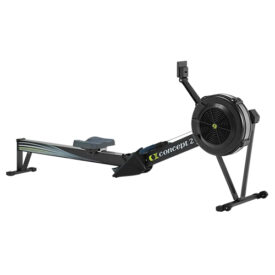
The Concept2 RowErg is one of the most tried and true rowers on the market. The "erg" (as it's commonly known) provides a double-dose of conditioning and muscular endurance, and is equipped with Bluetooth connectivity and a nifty monitor to track meters rowed and calories burned.
Specs
- Resistance Type: Air
- Display Type: PM5 monitor
- Weight Capacity: 500 pounds
- Dimensions: 95” L x 24” W
- Price: $990.00
The Concept2 RowErg, also known as the Concept2 Model D, is one of the best air rowing machines on the market. Many of our testers are CrossFit coaches and athletes, and while they may be biased since this is the rower most often utilized in CrossFit gyms, some of them have said this is the best rower they’ve ever used. Footprint, portability, durability, and ergonomics all score a 4.5 out of 5.
Compared to magnetic rowers, air rowers don’t always allow for resistance adjustments. However, the Concept2 RowErg has a damper that allows you to choose between 10 resistance settings. “Adjusting this damper affects how much air can enter the flywheel and how much resistance you’ll battle against with each stroke,” says our tester, who gives customizations a perfect 5 out of 5.
There isn’t a touchscreen on this rower, but BarBend editorial member Ben Emminger found this display to be more than suitable for their workout, saying: “I appreciate the level of detail the monitor provides during training.” The Performance Monitor 5, also known as a PM5, offers a ton of training capabilities like a variety of workout programming, some games, and training metrics such as speed, stroke rate, distance, watts, and calories burned. Tech capabilities score a 4 out of 5.
The Concept2 RowErg features a chain drive, which requires more maintenance than belt drive rowers. At the same time, chain drive systems can withstand a larger frequency of use than belt drives. Durability scores a 4.5 out of 5. Additionally, while the seat, in my own experience, can be uncomfortable, it can support users up to 500 pounds. “While the seat is molded to have grooves for your backside, it’s still made out of a hard plastic so it can be uncomfortable for longer workouts,” says our tester.
Read our full Concept2 RowErg Review.
Best Budget Water Rowing Machine: Yosuda Water Rowing Machine
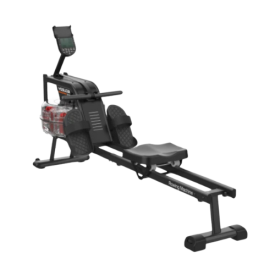
This foldable Yosuda rowing machine works to replicate the experience of rowing in water. A built-in monitor allows you to track your calories, time, speed, strokes, and distance, and you can connect with apps like Kinomap thanks to its Bluetooth compatibility.
Specs
- Resistance Type: Water
- Display Type: LCD
- Weight Capacity: 300 pounds
- Dimensions: 34.3” H x 71.57” L x 17.9” W
- Price: $439.99
Those who row competitively often prefer water rowers because they more closely mimic the feel of rowing in a boat and the resistance of paddles in the water. Priced under $500 with a compact storage and design, the Yosuda Water Rowing Machine will provide you with that same familiar feeling without breaking the bank or taking up a ton of space.
While we have yet to fully test out the Yosuda Water Rower, we’ve used Yosuda cardio equipment before and can recommend it. We already like the rower for its solid build at a budget price. This budget rowing machine uses fan blades that spin against water resistance within a leakproof polycarbonate tank — preventing leaks while mimicking the feel of rowing in an actual boat out on the water.
[Related: Yosuda Exercise Bike Review]
An LCD screen helps you keep track of key rowing metrics such as distance, time, strokes per minute, and calories. While it doesn’t have its own touchscreen or monitor, you can set your phone or tablet on the holder above the LCD screen and connect through Bluetooth to certain rowing apps, such as Fitlog or Kinomap, to better log your rowing and high intensity interval training (HIIT) workouts).
The ergonomic padded seat follows over double aluminum rails to provide smooth tracking while rowing long distances, adding to the feel of being on the water. When not in use, the Yosuda rowing machine can be stored upright against a wall for space-saving purposes, only taking up about 4 square feet of floor space.
At $439.99 before taxes and shipping, this rowing machine is one of the more cost-effective rowers on this list. And although the weight capacity of 300 pounds may not be quite as high as more premium rowers, it’s still a respectable capacity for a budget-priced machine. At just over 71 inches long, Yosuda recommends this rower for users up to 6 feet 6 inches, so taller and heavier athletes may need to invest in a different rower.
Still, as far as water rowers go, this one ticks all the necessary boxes without blowing up the price with tons of features you may or may not use. If you’re looking for a basic water rower that won’t break the bank but still offers a high-quality build, this rower is for you.
Best Budget Rowing Machine Under $500: Sunny Health & Fitness Magnetic Rowing Machine
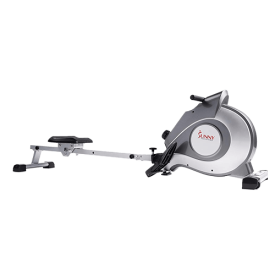
This Sunny Health & Fitness SF-RW5515 is perfect for athletes who are shopping on a budget. This one has a magnetic resistance and a small digital monitor to track your stats.
Specs
- Resistance Type: Magnetic
- Display Type: LCD
- Weight Capacity: 250 pounds
- Dimensions: 23.6” H x 89” L x 18.9” W
- Price: $399.99
Though all of these rowers are fairly inexpensive, the Sunny Health & Fitness Magnetic Rowing Machine is under $400, which is just about as cost-effective as it gets when it comes to rowing machines — and on top of that, this is still a pretty high-quality machine for your HIIT or LISS cardio session (aka low-intensity steady-state cardio).
Cycling through the levels of magnetic resistance was a highlight for BarBend editorial member Matt Cummings when he tested out the similar RW5801 model. “To adjust the resistance, all I had to do was turn the knob, very similar to an exercise bike,” he notes, scoring its customizations 4 out of 5. “The foot straps were super basic, velcro straps, but their width helped them feel pretty secure.”
While making adjustments on this quiet machine was a breeze, he advises tempering expectations when it comes to onboard technology — a 2.5 out of 5. “It just has a basic LCD display, but it does show all the metrics you’d need to track during a workout — time elapsed, calories burned, distance traveled, and strokes,” he says of the similar RW5801. “I kind of appreciated the simplicity, but it’s not winning any awards for tech.”
Cummings had zero trouble moving the 60.9-pound RW5801 around our gym, but at 36.3 pounds, this model is even lighter. “It was incredibly easy to move around — just grab the rear of the frame, lift and roll,” he says. Both models earned a 4.5 out of 5 for portability, but he adds that your flooring could impact how it rolls. “The wheels are very tiny, so it was annoying rolling it over the turf in our gym. On hard flooring, it was seamless, but it wouldn’t take much resistance to slow it down.”
Though there are still eight levels of resistance, other rowers on the market offer more than double that number of resistance options. This rower is basic, but it still offers exactly what you need for a solid at-home workout — eight levels of resistance, stat-tracking, and non-slip footplates for stability.
How We Tested and Chose the Best Budget Rowing Machine
We know not everyone is going to be looking for the same specs and features on their rowing machine. That’s why we’ve included a variety of price points, features, and size options on this list — all of the highest quality within a lower budget.
- Price: The number one factor we considered when making this list was the price. Since rowers can cost up to about $3,000, we sliced that number in half for this budget list and made sure all of the rowers we included here cost under $1,500.
- Warranty: Because these are budget rowers, the warranties may not be as generous as high-end options, but we tried to find rowing machines with decent warranties: a multi-year warranty on the frame, and ideally a year or more on parts, components, and labor.
- Features: Many budget rowers offer virtual training and interactive touchscreens, which can be a great touch if you are trying to stay active at home. But there are also plenty of budget options where you can just row, track your split time, and work on your power and cardio endurance.
- Size: “Size, weight, and portability are important, as you’ll need to ensure the machine will fit in your space and it’s relatively easy to move if you won’t be able to leave it stationary,” says BarBend expert review Amanda Capritto, CPT, CES, CNC, CF-L1, CSNC. On top of these factors, we also considered rowers that fold completely in half for storage and some options with a display or console that folds down.
- Quality: Looking for the best budget home gym equipment can often lead you towards gear that won’t stand the test of time or give you the type of workout you had in mind. We opted for rowers that could support users up to 300 pounds or more and with smooth pulls for the most comfortable and supportive workout experience.
- Construction: While plastic is often used in budget-friendly and even more pricey equipment, to provide equipment that can withstand your workout, we chose rowers that utilized aluminum and steel frames and sliding rails.
Benefits of Budget Rowing Machines
The benefits of rowing machines are far-reaching — these machines offer full-body cardio exercise, a solid variety of workouts, and less impact on the joints.

- Approachable Price Points: Rowers can be a hefty investment, costing nearly $3,000 in some cases. Budget-friendly rowers keep the price low, some costing as low as a few hundred dollars, while still providing a durable piece of equipment that allows for a full-body workout. Speaking of which…
- Full-Body Workouts: Rowing is great for those who want a full-body workout and are looking for a form of cardio that is low impact. Unlike bikes and treadmills, rowers can help target your lower and upper body, targeting your quads, back, core, and arms with every stroke.
- Workout Variety: If you’re a fan of HIIT workouts, you can do sprints with intervals. Say you prefer long-distance rowing, then you can crank out a 5,000-meter (or longer) timed row.
- Endurance and Strength Training: Rowers are unique as far as cardio machines are concerned in that, in addition to building cardio endurance, they can help build muscle, too. Simply crank up the resistance and focus on making deliberate and powerful strokes — you’ll be feeling a burn in your legs, back, core, and arms in no time.
- Low Impact Exercise: Since the machine is supporting your weight and your muscles are working against resistance from either air, water, or magnets, your joints are taking less abuse than they would with even the best treadmills. “As an exercise professional, I think everyone can benefit from rowing as a form of exercise, [especially] people who need a low-impact form of cardio,” says our expert reviewer Amanda Capritto.
- Suitable for Small Spaces: Budget rowing machines cut out premium features like touchscreens to help cut costs and save space, making these compact rowing machines a great cardio piece for small spaces. Others can fold, which can provide a great solution for compact home gym spaces.
How Much Do Budget Rowing Machines Cost?
Indoor rowers, like almost any piece of exercise equipment, can vary drastically in price depending on a variety of factors. One of the biggest influences on the price are the features included, such as technology integration, Bluetooth connectivity, and a touchscreen display often found on more expensive models. Our list has options that range in price from $399.99 up to $999.
| Best Budget Rowing Machine Overall | Sole SR500 | $749.99 |
| Best Budget Rowing Machine for Home | ProForm Pro750R | $699 |
| Best Budget Rowing Machine for Beginners | Yosuda Air Magnetic Dragonfly Rower | $999.99 |
| Best Budget Rowing Machine for Small Spaces | Bells of Steel Blitz Air Rower | $799.99 |
| Best Budget Rowing Machine for Streaming | Echelon Row | $999 |
| Best Budget Air Rowing Machine | Concept2 RowErg | $990 |
| Best Budget Water Rowing Machine | Yosuda Water Rowing Machine | $439.99 |
| Best Budget Rowing Machine Under $500 | Sunny Health & Fitness Magnetic Rowing Machine | $399.99 |
That said, you can pick up an affordable rowing machine for as little as $399.99 or spend up to $3,000 on an extremely high-end rower. The sweet spot for us (and this list) is right around the $1,000 mark — at this price, you’ll find a lot of high-quality rowers that offer some features but lack those that drive the price up high (like full-color LED digital monitors).
What to Consider Before Buying a Budget Rowing Machine
Even though the rowers on this list cost less than most on the market, the best home gym equipment for your budget is still an investment. You’ll want to make all the proper considerations — like size, rower type, and features — before deciding which rower to purchase.
Size and Foldability
Both size and folding capabilities are essential factors to consider when making your purchase. Many rowers with large displays take up a lot more space than rowers that just have a small, basic console. In addition, you can also save space by opting for a rower that folds in half (or at least has a console that folds down), so you can more easily store your equipment vertically. Be sure to measure your space and choose a rower that will fit.
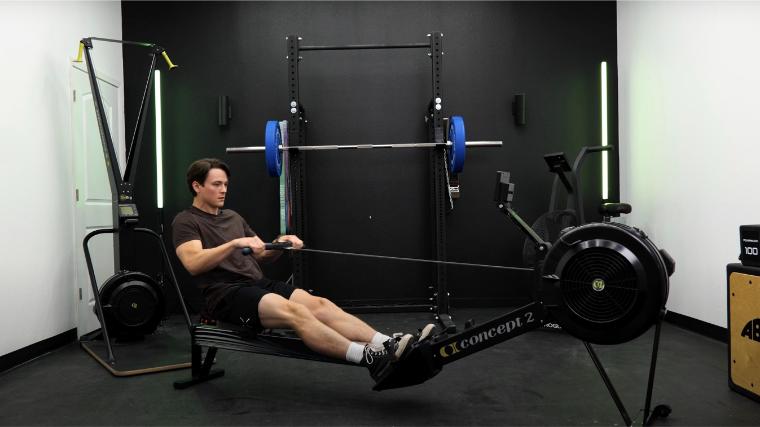
Additionally, if you’re looking for a rower that you can use and then stow upright to save some floor space, make sure that the model you’re considering has upright stowing capabilities. Some rowers allow this, some rowers allow this with safety attachments, and some rowers can’t be safely stowed upright at all. If the rower you’re interest in can be stowed upright, the floorspace it will take up will amount to the height and width of the machine.
Type of Rower
“Rowing is an effective form of exercise, engaging most of the body’s muscles and significantly working the cardiovascular system. There are several types of rowing machines, including water rowers, air rowers, magnetic rowers, and hydraulic rowers, and each type offers a different experience,” says BarBend expert reviewer Amanda Capritto. Air and the best magnetic rowing machines use a flywheel, but magnetic resistance is quieter than air resistance. Water resistance rowers use a tank of water to create resistance, but like air resistance rowers, water rowers tend to be louder.
Here’s a quick breakdown of the different types of rowing machines, as well as some brief pros and cons of each:
- Air Rowers: Air rowing machines use a flywheel that spins blades against air to create resistance. These rowers generally will help you save some cash, but the air resistance can also be loud, which may be a problem if you’re wanting a quieter option.
- Magnetic Rowers: These rowers use a magnetic flywheel to create resistance. The resistance levels are often adjustable, and magnetic rowers prove to be a quieter option, too. However, these are often pricier machines.
- Water Rowers: This type of rowing machine uses a water-filled tank with spinning fan blades to create resistance. Water resistance best mimics the feel of rowing on water (although it’s not an exact replica), but these rowers will also require more maintenance than other rowers.
- Hydraulic Rowers: Hydraulic resistance is used in a hydraulic rower; basically, pistons push against air or fluid to create resistance. While these rowers are compact in design and quiet, they also don’t have the rowing “feel” as much as other rowers. Instead, the sensation is more comparable to a leg press.
One of the biggest things to consider here is how quiet you want your machine. If you want the quietest machine on the market, you should opt for a magnetic resistance rower. If you’re going to be secluded in a garage and can afford to make some noise, an air rower can save you some cash. While water rowers fall somewhere in the middle regarding the noise that they make, the slosh of water cycling around the water tank may be a welcome, and calming, noise to your cardio session.
Features
Finding budget rowers that offer great features wasn’t as difficult as we thought it would be. Plenty of rowers below $1,000 have digital displays, streaming options, and Bluetooth functionality to pair with heart rate monitors, resistance adjustable handlebars, or the app of your choice.
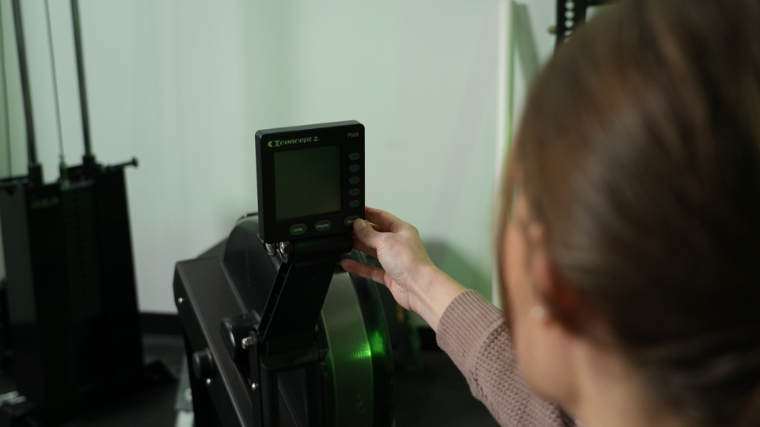
“You can also choose between a smart rowing machine and a ‘not smart’ one, meaning one that has a fancy screen that streams stuff or one that has a simple LCD screen that reads out basic metrics. Smart rowing machines are more expensive and usually require a monthly subscription to access full functionality,” says Capritto.
There are also plenty of budget rowers with basic controls and stat tracking that offer just what you need for a solid workout at home. Before deciding which rower to buy, consider which features — streaming, resistance, stat tracking, large display screen, etc. — you may want to support you while you’re crushing, and creating fitness goals.
Value
Budget-friendly doesn’t have to mean poorly made. When perusing for a budget rower, value is a key consideration. While you won’t get all of the bells and whistles with lower cost models, you can still find machines with steel and aluminum frames and rails, an ergonomic rail length and a comfortable handle, secure footrests, a weight capacity that supports you, and basic monitors with built-in workouts and tracking metrics.
Once you’ve set your budget for how much you’re willing to spend, check out the models within that range (with the help of this guide) to see what’s available to you. If there are features you like outside of your financial range, you may want to consider saving up a little longer to splurge on the machine you truly want.
Ergonomic Needs
While rowing can be a fantastic full-body workout, sitting in one place for extended periods of time can get uncomfortable. That’s why many rowers have ergonomic designs built into their seat, handles, and foot pedals. If a 20-minute rowing session (or longer) seems daunting to you and your joints, look out for a molded and padded seat and handles with a contoured grip that fits naturally with your hands, as well as pedals that are angled in a comfortable position for your feet.
Best Budget Rowing Machines FAQs
Can I still find high-tech features on budget rowing machines?
Yes. There are plenty of rowing machines that are under $1,500 that offer touchscreen displays, streaming options, tablet holders, Bluetooth compatibility, and more. You may not find them on the very low end of the budget spectrum (around $500), but if you are able to dish out around $1,000, the options are there.
What is the best budget rowing machine?
There’s a lot that goes into selecting the best budget rower for you, like your space, the type of resistance you prefer, and your budget. That said, we’re big fans of the Sole SR500. It provides a realistic feeling of rowing on the water and is comfortable to use, even during longer sessions. Plus, it comes with some nice features without going overboard and jacking up the price.
How much do budget rowing machines cost?
Budget rowing machines can range in price from around $300 on the low end for a basic unit to around $1,500 for a higher-end but still not a crazy expensive machine. If you want a balance of value and features, you can expect to spend between $600 and $800.
What kind of resistance on a budget rower is best?
This all depends on personal preference. No resistance is going to be better than the other. If you want something quiet, opt for magnetic resistance. If you don’t mind the noise, a water rower or air resistance will do just fine. However, if you want a rower that offers plenty of resistance levels, you’ll want to opt for a magnetic or air resistance rower as even the best water rowing machines do not tend to offer a change in resistance.
Do budget rowers fold?
Some do. Many rowers will fold right in half for storage, while others just have an arm for the display or console that will fold down, so you can easily store the machine vertically in a corner.
What muscles do a budget rower work?
Unlike a treadmill or exercise bike, a budget rower works your whole body. The first part of the pull works your legs, the second part works your abs and lower back, and the third part works your biceps and upper back. Plus, holding on to the handle for long workouts will also work your forearms.
Is a budget rower good for weight loss?
Since it recruits such a large amount of muscle, rowing burns a lot of calories compared to a treadmill or exercise bike, which primarily require your legs to move. In fact, an article published by Harvard Health showed that a 155-pound individual can burn around 252 calories during 30 minutes of rowing. (2)
References
- Best exercises for rheumatoid arthritis | Arthritis Foundation. (n.d.). https://www.arthritis.org/health-wellness/healthy-living/physical-activity/other-activities/best-exercises-for-rheumatoid-arthritis
- Harvard Health. (2021, March 8). Calories burned in 30 minutes for people of three different weights. https://www.health.harvard.edu/diet-and-weight-loss/calories-burned-in-30-minutes-for-people-of-three-different-weights

